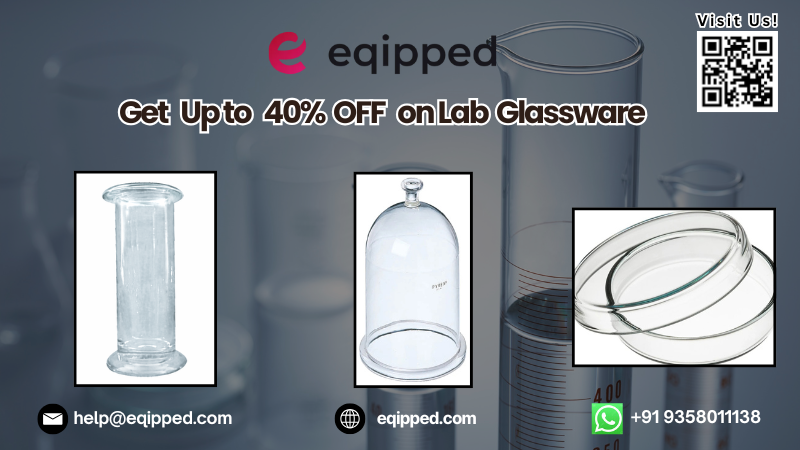A Complete Guide to Laboratory Glassware: Types, Uses, and Best Practices

In every scientific laboratory, precision, safety, and efficiency are paramount. Among the essential tools that enable researchers, students, and professionals to perform experiments and tests are laboratory glassware. These tools are indispensable across disciplines like chemistry, biology, physics, and environmental science. Whether you are a student handling your first lab practical or a researcher conducting advanced experiments, understanding laboratory glassware’s types, applications, and care is vital for accurate and successful outcomes.
What is Laboratory Glassware?
Laboratory glassware refers to a collection of specialized glass containers and tools designed to handle, mix, measure, heat, and store chemicals and biological samples. Glassware is preferred for its chemical resistance, clarity, and ability to withstand high temperatures. High-quality laboratory glassware is manufactured using borosilicate glass, which has low thermal expansion and can endure rapid temperature changes without cracking.
Common Types of Laboratory Glassware
Beakers
Beakers are cylindrical containers with a flat bottom and spout for pouring. They are versatile tools used for mixing, heating, and stirring solutions. Beakers come in various sizes, typically ranging from 50 ml to 2000 ml. They are not meant for accurate measurements but are essential for tasks like dissolving solids or performing rough volume measurements.
Flasks
Flasks are used for mixing and heating substances and come in different forms:
Erlenmeyer Flask: With a conical shape and narrow neck, it is excellent for mixing without spillage.
Volumetric Flask: Designed for precise measurement of liquid volumes, it is used in preparing standard solutions.
Round-Bottom Flask: Common in organic chemistry for distillation and reflux processes.
Graduated Cylinders
These tall, narrow containers are marked with volume graduations for precise measurement. Graduated cylinders are more accurate than beakers and are used when solution volumes need to be measured carefully.
Pipettes
Pipettes are slender tubes that allow the transfer of small, measured amounts of liquids. Types include:
Volumetric Pipettes: Provide one specific volume measurement.
Graduated Pipettes: Allow measurement over a range of volumes.
Burettes
Burettes are long tubes with a tap at the bottom, used in titration experiments where controlled addition of a reagent is required. Their precision helps determine unknown concentrations in solutions.
Test Tubes
Test tubes are small cylindrical tubes used for qualitative experiments, such as observing chemical reactions or heating small quantities of liquids. They are widely used in educational labs.
Watch Glasses
These shallow, concave glass dishes are used to evaporate liquids, hold small samples, or cover containers during reactions.
Funnels
Funnels help in transferring liquids and powders into containers with narrow openings. Glass funnels are often used when working with volatile or corrosive substances because glass is chemically inert.
Condensers
Used in distillation and reflux, condensers cool vapor back into liquid form using water jackets around the glass tube. This makes them crucial in separating substances based on boiling points.
Desiccators
These airtight glass containers help protect moisture-sensitive samples by storing them with desiccants like silica gel.
Why Laboratory Glassware is Essential
Chemical Resistance
Borosilicate glass is highly resistant to acids, bases, and organic solvents, making it ideal for laboratory applications where chemical reactivity is a concern.
Thermal Stability
Laboratory glassware can tolerate rapid heating and cooling, making it suitable for procedures that require boiling or ice baths.
Transparency
Clear glass allows for easy observation of reactions, changes in color, or phase transitions without interfering with the process.
Non-reactive Surface
Glass does not interact with most chemicals, ensuring that samples remain uncontaminated during experiments.
Durability
With proper care, glassware can last for years, making it a cost-effective investment for laboratories.
Best Practices for Using Laboratory Glassware
Handling with Care
Glassware is fragile and can easily break if mishandled. Always inspect glassware before use for cracks or chips that could compromise safety.
Proper Cleaning
After use, clean glassware thoroughly with suitable detergents and rinse with distilled water. For stubborn residues, soak the glassware or use specialized cleaning agents.
Avoiding Thermal Shock
Rapid temperature changes can cause glass to crack. Gradually heat or cool the glassware to avoid thermal stress.
Correct Usage
Use glassware appropriate for the task. For example, do not use beakers for precise measurements or round-bottom flasks for reactions that require stability on a flat surface.
Safe Storage
Store glassware in designated racks or shelves to prevent accidental breakage. Use padding or separators when transporting multiple pieces.
Labeling
Label glass containers with permanent markers or tags when dealing with hazardous chemicals to avoid mix-ups.





